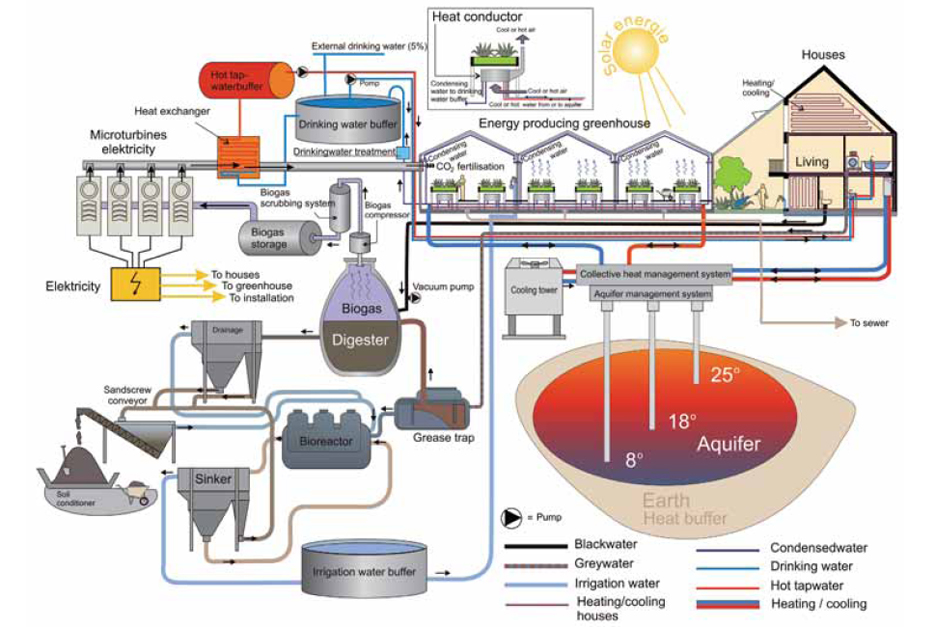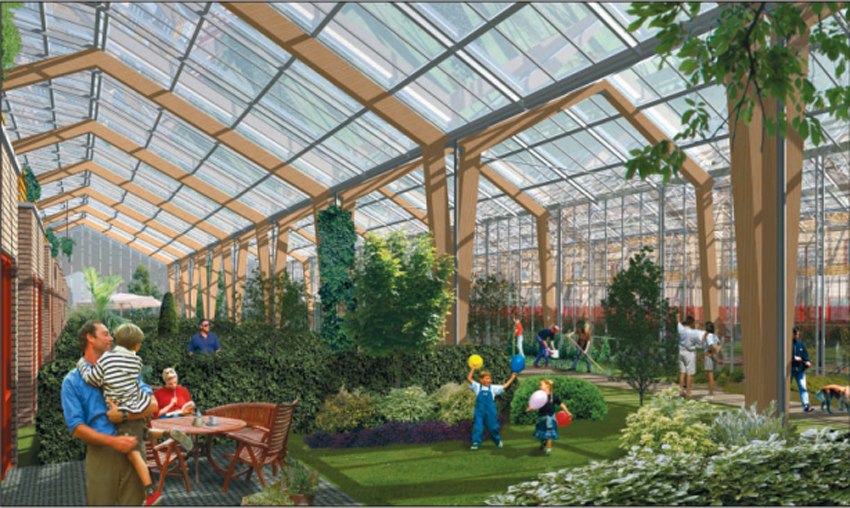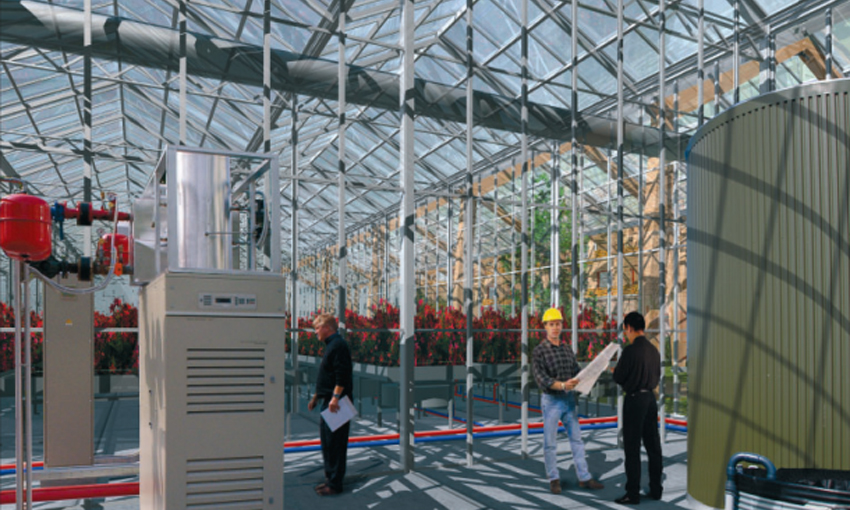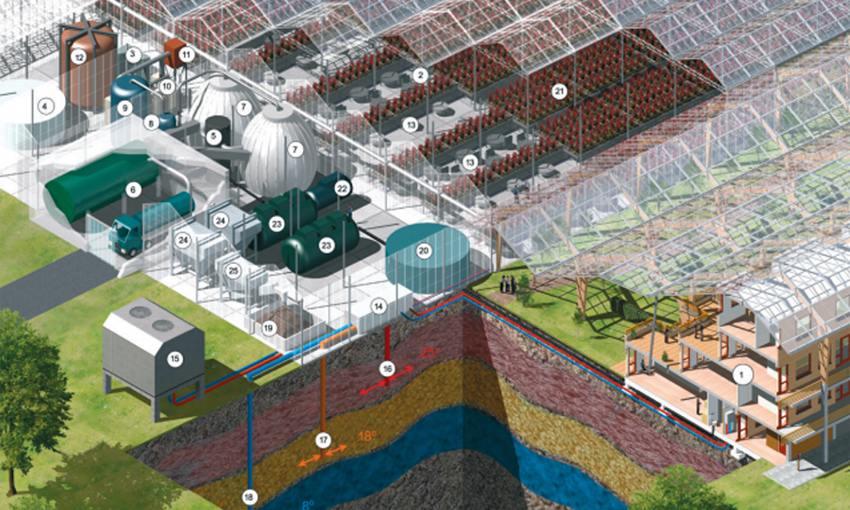 Greenhouse Village is a concept that enables a complete decentralized solution for energy and water supply, waste and water treatment and recycling of nutrients through a shared system between greenhouses and homes. Dutch greenhouses account for almost 100% of the national natural gas consumption. Instead these green houses are transformed into sources of sustainable energy for the suburban neighborhood. Greenhouse capture excess heat from solar radiation during summer, then the heat is stored in underground natural water reservoirs (aquifers) and used for warming the greenhouse at night or during winter (2 ha greenhouse can heat up 200 houses). All energy is sourced from renewable energy sources (solar and biomass). Water can be sourced from rain water run off and any waste water and green wastes are locally treated and reused.
Greenhouse Village is a concept that enables a complete decentralized solution for energy and water supply, waste and water treatment and recycling of nutrients through a shared system between greenhouses and homes. Dutch greenhouses account for almost 100% of the national natural gas consumption. Instead these green houses are transformed into sources of sustainable energy for the suburban neighborhood. Greenhouse capture excess heat from solar radiation during summer, then the heat is stored in underground natural water reservoirs (aquifers) and used for warming the greenhouse at night or during winter (2 ha greenhouse can heat up 200 houses). All energy is sourced from renewable energy sources (solar and biomass). Water can be sourced from rain water run off and any waste water and green wastes are locally treated and reused.
SOURCE: http://www.zonneterp.nl/english/flyer_greenhouse_village.pdf
EDITOR’S NOTE: This concept behind Greenhouse Village has also been used by architect Jon Kristinsson for the Floriade international horticulture exposition in Venlo. A feasibility study in Zuidplaspolder to establish 400 ha of glasshouses and 20,000 houses has been designed by Daan Josee. In Shenzen, China, a first international demonstration project is under development. The strength of this model is its ability to close the gaps in our energy, water and nutrient cycles. As it will be important to understand the physical impact of a large-scale project, one wonders how such an idea can be scaled down for insertion into the urban fabric.








